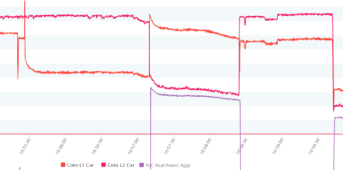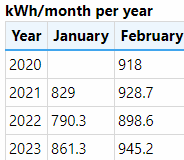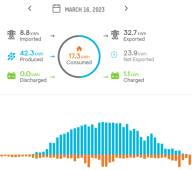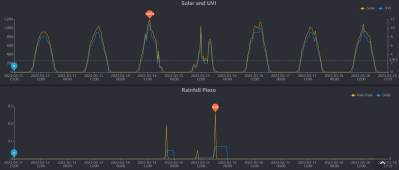GXMnow
Solar Wizard
- Joined
- Jul 17, 2020
- Messages
- 2,713
Yes, an isolation transformer would do the trick, but that is a big cost. I only have a 100 amp main, but that would still be a 24 KVA transformer. The name plate picture is perfect at 25 KVA. 265 pounds, wow. But even more scary, 115C rise!! At 40C ambient, that is 155C winding temp at rated power. How many watts are being turned into heat?
If they do start billing on the two legs independently, I will just work harder at balancing my loads. Maybe switch a few things to run on 240 volt. All My PC's can do that. The clothes washer and dryer are 120 volt, but since they each only pull 350 watts, they are on the same circuit. I could split them and have on on each leg to balance it better.
Here is a snap shot of what is happening right now.

The load side has -2,995 watts. That is the Enphase solar - all my load in the backup panel.
The AC1 "grid" is getting 82 watts. And 2,690 watts is charging the battery.
The load side shows the imbalance of loads in the backup panel. -13.5 amps on L1 and -8.2 amps on L2 for a 5.3 amps difference. That difference carries back to the AC1 input as well. 2.1 amps vs -3.3 amps. 5.4 amps difference.
If they do start billing on the two legs independently, I will just work harder at balancing my loads. Maybe switch a few things to run on 240 volt. All My PC's can do that. The clothes washer and dryer are 120 volt, but since they each only pull 350 watts, they are on the same circuit. I could split them and have on on each leg to balance it better.
Here is a snap shot of what is happening right now.

The load side has -2,995 watts. That is the Enphase solar - all my load in the backup panel.
The AC1 "grid" is getting 82 watts. And 2,690 watts is charging the battery.
The load side shows the imbalance of loads in the backup panel. -13.5 amps on L1 and -8.2 amps on L2 for a 5.3 amps difference. That difference carries back to the AC1 input as well. 2.1 amps vs -3.3 amps. 5.4 amps difference.











